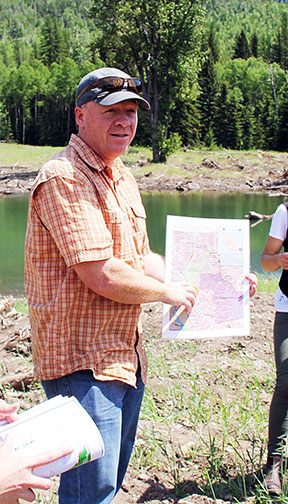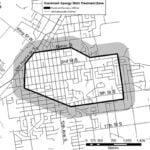Home »

Managing conservation lands ‘natural’ choice for biologist
Faces & Places: Richard Klafki
Story by Nicole Trigg
Kootenay Conservation Program
Growing up in Golden, it was only natural that Richard Klafki was passionate about spending time outdoors, including activities like fishing and skiing. And with a father who worked at a sawmill and a brother who was a forester, a career in natural resource management seemed like the natural choice.

But Richard, who is now the Director for the Nature Conservancy of Canada’s Canadian Rockies Program that spans both the East and Central (West) Kootenay, quickly discovered as an undergrad university student that his calling was wildlife biology.
As a student biologist with the Columbia Basin Fish and Wildlife Compensation Program, he worked on the North Columbia Wolverine Study based out of Revelstoke with program biologists, assisting with building traps, capturing and radio tagging the elusive carnivore. These experiences led him into work as a contract wildlife biologist throughout British Columbia, Alberta and Ontario after graduation. As well as gaining extensive experience surveying and handling wildlife for research including northern goshawk, fisher, and badger, Richard also contributed to habitat and ecosystem restoration, wildlife inventory and species at risk surveys.
After completing his Master of Science in environmental science studying the effects of roads on a badger population in the Cariboo region of B.C. at Thompson Rivers University in 2014, he was hired by the Nature Conservancy of Canada as the Canadian Rockies Stewardship Coordinator and became the Director in 2017.
“When you work as a contract biologist, you may do a habitat prescription for one patch of forest or land but often won’t go back for years, if ever to see the results of your recommendations,” Richard said. “What’s nice about this job is managing that piece of land and implementing a restoration project, and seeing every few months how it’s recovering and restoring itself.”
For every individual NCC property there’s a property management plan with indicators for measures of success. Plans are usually updated every five years and measures of success are evaluated through mapping, GIS and surveys.
“So when we set up a property, say it’s a heavily degraded grassland and full of noxious weeds, one of the measures of success would be that in the next five years we’re going to try to go from an ecological health rating of low, and attempt to make it a medium or high score, over the five year plan,” he explained.
NCC’s Canadian Rockies region has 27 properties (including conservation covenants), which range in size from 14 acres to 630 square kilometres. This means that between NCC’s three main B.C. programs – the Canadian Rockies, the Southern Interior, and the West Coast – the Canadian Rockies manages roughly 2/3 of NCC’s B.C. properties area-wise.
“And that’s most likely based on Darkwoods,” said Richard.
In the Canadian Rockies region, NCC focuses on large landscape-level conservation, providing connectivity for everything from grizzly bears and moose to mountain goats and species-at-risk.
 In July, NCC announced it had expanded the Darkwoods Conservation Area northwest of Creston by purchasing the Next Creek property, adding 14% to the conservation area. The watershed is located west of Kootenay Lake between Nelson and Creston, and is effectively the centre of the 600-kilometre Darkwoods Conservation Area, which offers habitat for close to 40 confirmed species at risk.
In July, NCC announced it had expanded the Darkwoods Conservation Area northwest of Creston by purchasing the Next Creek property, adding 14% to the conservation area. The watershed is located west of Kootenay Lake between Nelson and Creston, and is effectively the centre of the 600-kilometre Darkwoods Conservation Area, which offers habitat for close to 40 confirmed species at risk.
Not only does Richard and the stewardship staff at the Canadian Rockies Program work at conserving and restoring habitat for wildlife, but also working with the people on the landscape as well. Part of his job is meeting those people and building relationships, and seeing what people’s ideas are for the future.
“A lot of this job entails working with the previous land owner – they may have set up a lease agreement with a gravel quarry or a forestry operation – and quite often we inherit those legacy leases and licenses and work with them to manage for long term sustainability, or often phase out inappropriate parts of the activities and rehabilitate and restore the land as they finish up and move on,” he said.
“We recognize the fact you can’t manage ecosystems in isolation and that people in these areas have livelihoods that depend on healthy landscapes. I think there is a way to blend conservation with human use, especially in this day and age.”
Learn about NCC’s Canadian Rockies Program.
The Kootenay Conservation Program is a broad partnership of over 80 organizations from across the Kootenays that works to conserve landscapes in order to sustain naturally functioning ecosystems. Learn more at www.kootenayconservation.ca.







